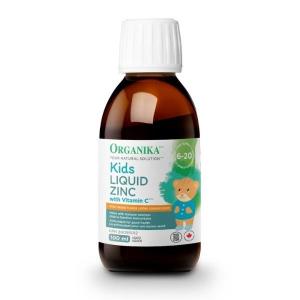
What is scarlet fever, how to recognize it, and how to treat it

Scarlet fever, also known as scarlatina, is an infectious disease caused by the bacteria Streptococcus pyogenes. This bacterium is responsible for various illnesses, but scarlet fever is one of the more serious ones that mainly affects children. Although modern medicine can effectively treat this disease, it is still important to be informed and prepared to recognize its symptoms and know how to act.
The bacteria Streptococcus pyogenes are transmitted via droplet infection, which means they can spread through sneezing, coughing, or even talking. The disease can start as a common sore throat, but if the bacteria produce certain toxins, it can develop into a scarlet rash, which is a characteristic sign of scarlet fever.
Symptoms of Scarlet Fever
The main symptoms of scarlet fever include high fever, which typically exceeds 38.5 °C. This illness begins with a sudden rise in body temperature, which can often be the first sign that something is wrong. Another characteristic symptom is intense sore throat, which is often associated with difficulty swallowing. The sore throat can be very severe and uncomfortable, significantly affecting the overall comfort of the patient.
One of the most noticeable symptoms of scarlet fever is a fine red rash. This rash usually appears on the chest and abdomen but can quickly spread to the entire body. The rash feels rough to the touch, similar to sandpaper, making it easily recognizable. Scarlet fever is also known for causing a so-called "strawberry or raspberry tongue." The patient's tongue becomes bright red and has a rough surface, which is one of the typical signs of this infection.
Try our natural products
In addition to these symptoms, the patient often experiences severe fatigue and overall body aches. Fatigue is pronounced and can significantly weaken the patient, accompanied by muscle and joint pain. These symptoms can greatly affect daily activities and require plenty of rest and care.
It is important to respond to these symptoms promptly. Scarlet fever can be serious if not properly treated, and therefore it is crucial to seek medical help at the first signs of suspicion. Proper diagnosis and treatment can help quickly manage this infection and prevent complications.
Diagnosis and Treatment
If you suspect scarlet fever, it is important to seek medical help as soon as possible. The doctor usually performs a quick strep test or takes a throat swab for laboratory culture to confirm the presence of the bacterium Streptococcus pyogenes. Proper diagnosis is key to successful treatment.
Treatment for scarlet fever involves several steps. The first step is administering antibiotics. Penicillin or amoxicillin are usually the first choices, as they are very effective against this bacterium. Antibiotics not only treat the infection but also help prevent possible complications that could arise without proper treatment.
Additionally, it is important to have plenty of rest and hydration. The patient should get enough rest and drink plenty of fluids to support their body in fighting the infection. Rest and hydration are essential for a quick recovery.
Try our natural products
Symptom relief is another important part of treatment. Paracetamol or ibuprofen can help reduce fever and alleviate sore throat pain, contributing to the overall comfort of the patient during illness. Proper treatment and care can significantly speed up recovery and minimize unpleasant symptoms.
If scarlet fever is not properly treated, it can lead to serious complications, such as rheumatic fever, glomerulonephritis, or otitis media, which is inflammation of the middle ear. Therefore, it is important not to take this illness lightly.
Prevention
The first and basic step is hygiene. Regular handwashing is crucial, as is using tissues when sneezing or coughing. This reduces the spread of the bacteria that cause this infection.
Another important measure is isolating the sick. Children or adults showing symptoms of a sore throat should stay home until they have been symptom-free for at least 24 hours and have completed their antibiotic treatment. This procedure helps prevent the spread of the infection to others. It is important for the sick to be calm and have enough time to recover.
Education also plays a significant role in preventing scarlet fever. Informing children and loved ones about the importance of hygiene and recognizing the early signs of infection can greatly help in preventing the spread of the disease. People should be aware of what symptoms may signal the onset of infection so they can act quickly and seek medical help.
By consistently following these preventive measures, we can significantly reduce the risk of spreading scarlet fever and protect not only ourselves but also our loved ones and the community. Prevention is always better than cure, so it is important to be informed and prepared.
Scarlet fever is an infectious disease that requires prompt diagnosis and proper treatment. By being aware of the symptoms and preventive measures, we can reduce the risk of infection and protect our health as well as the health of our loved ones. What better way could we care for our health than by being informed and ready to act at the first signs of illness? Let’s be vigilant and responsible, and together we can minimize the impacts of this infectious disease.









